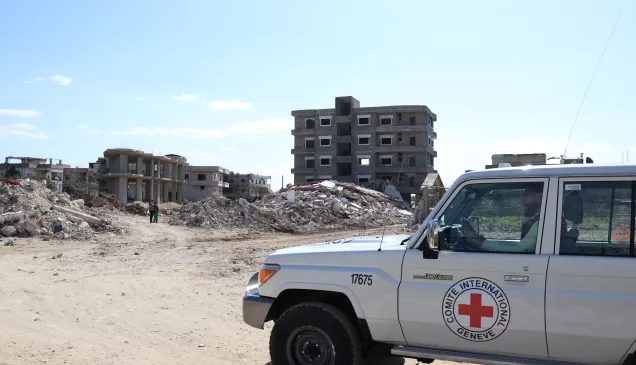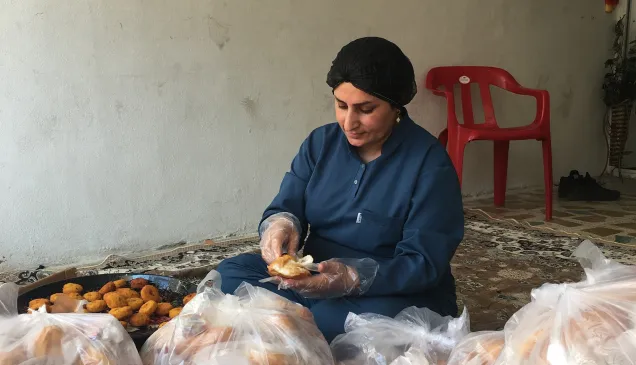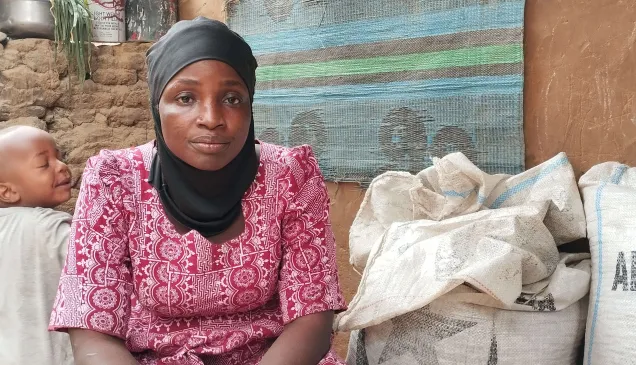China: Cash Transfer Programming Represents One of the Biggest Innovations in Humanitarian Action

Money is the main means of survival for most people around the world. In armed conflict, having cash to buy essential goods can mean the difference between life and death for people suffering the effects of war. Cash transfer programming (CTP) has become an essential tool of humanitarian actions of the ICRC with clear benefits in certain situations.
During Oct. 23rd - 25th, Humanitarian Aid Network Capacity Building Training Session & Launching Ceremony of Cash Transfer Programming in Armed Conflict was held in Hainan province, China. The ICRC, together with many humanitarian organizations, shared their extensive experience in CTP.
Cash transfer programming (CTP) is one of the biggest innovations in humanitarian action in the last decade, and an essential tool for the ICRC to carry out economic security activities. It has become the default response option for humanitarian organizations of all sizes acting in many of the world's humanitarian crises. Based on the latest report, Cash Transfer Programming in Armed Conflict: The ICRC's Experience, by 2017, the ICRC has provided cash-based interventions in 35 countries, with the number of beneficiaries going up by 600% in the last five years.
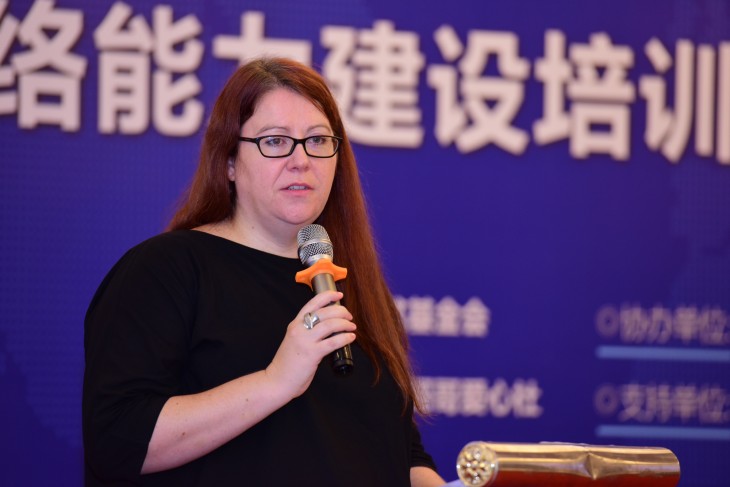
ICRC institutional lead for cash Jo Burton shared CTP experience with participants. CC BY-NC-ND /Si Xuanlin
Our experience and evidence show that CTP increases people's dignity, power, autonomy and choice in how they manage their survival and recovery. CTP can bring about positive economic and social effect in aid activities, whether in situations of armed conflict or natural disaster.
"This report also highlights CTP-specific risks and responses," said Jo Burton, ICRC institutional lead for cash, and one of the main authors of the report.
The report indicates that the use of CTP is subject to risks similar to those involved in providing in-kind aid – market interference, accountability tracking, social tensions, protection issues – and these need to be managed professionally, as in any other humanitarian program.
Hosted by the China Foundation for Poverty Alleviation (CFPA), this event was organized by the ICRC, with the support from Haikou Longgege Volunteer Club. It gathered more than 100 representatives from the CFPA, Hainan Emergency Response Management Society, 26 membership organizations of the national humanitarian aid network, and 11 provincial civil organizations for aid and disaster relief.
"Currently, the use of CTP is limited to only a few domestic disaster relief projects. The CFPA joins hands with the ICRC in this event to draw on relevant experience from international organizations and build the expertise of humanitarian aid network," said Mr. Liu Zhihua, assistant director of the Disaster Relief Department in the CFPA.
Large scale use of CTP among international humanitarian organizations started after the Asian tsunami in 2004. The total budget has multiplied, especially in the past 5 years.
In a panel discussion themed "CTP in International Organizations" during the event, representatives from several organizations shared their views on the flexibility and feasibility of CTP.
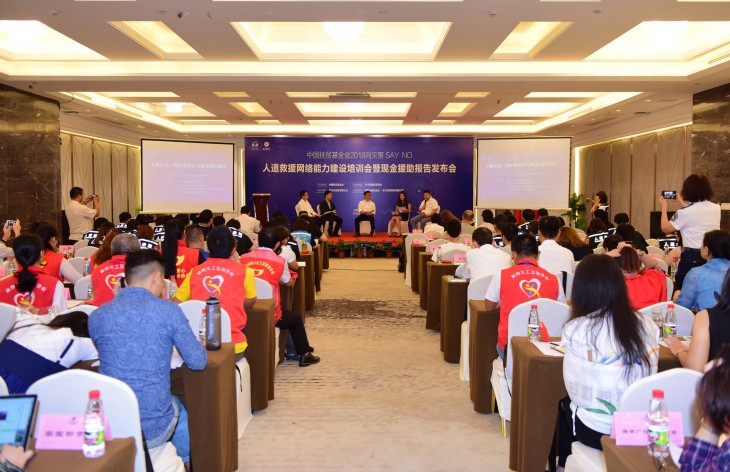
Representatives from several international organizations joined a panel discussion on CTP models. CC BY-NC-ND /Si Xuanlin
"In China, the ICRC and the Red Cross Society of China (RCSC) cooperated in livelihood projects. Such program lifts beneficiaries out of poverty by providing unconditional small cash grants for families with the willingness and capacity," said Ms. Sun Yan, head of Economic Security Department of the ICRC Regional Delegation for East Asia. "Livelihood projects are better suited to the needs of the vulnerable population. It allows beneficiaries to decide their business activities by themselves, which motivates them to work harder, thus ensuring higher success rate."
Currently, the project has been implemented in Yunnan province, Jilin province, Guizhou province, and Xinjiang Uyghur Autonomous Region, among others, bringing about 1,500 households above poverty line.
"It is to be noted that CTP is a tool of humanitarian action, not a humanitarian outcome in itself," highlighted Jo Burton, the ICRC's institutional lead for cash. "CTP must be implemented strategically, in pursuit of clear humanitarian goals, if it is to be the best way to meet people's needs in a particular context."
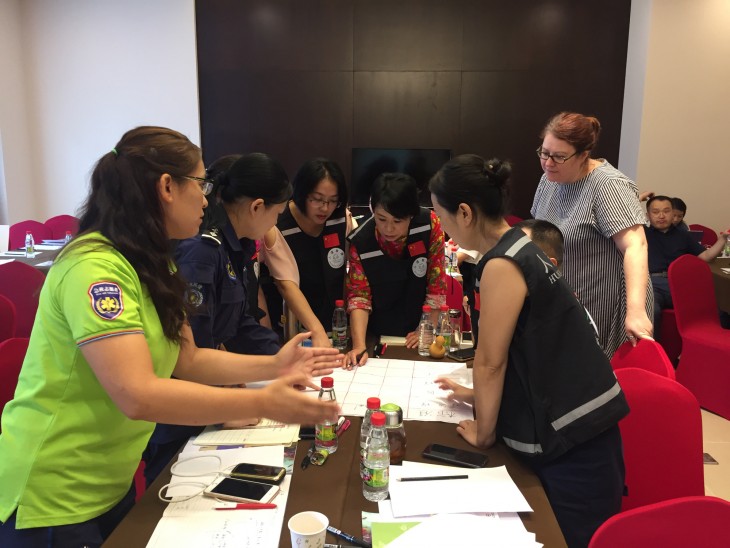
Participants discussed about how to design a project. CC BY-NC-ND / Li Cong
In this regard, a two-day training was organized by the ICRC for participants from aid agencies. Through case study, group discussions and presentations, participants learnt a lot about the CTP feasibility assessment, program design, and assessment methods. Suggestions were also given as to how to address certain risks.
Ms. Liu Yan, a representative from Haikou civil disaster and emergency relief team, told us, "in the past training sessions, it was made clear that the use of cash by charity organizations requires particular caution and involves many risks, but no detailed guidance was provided. This time, many concepts were clarified from a professional perspective and I knew better how to implement the projects and avert risks. Many of my colleagues said that they can't wait to hear more about it."

